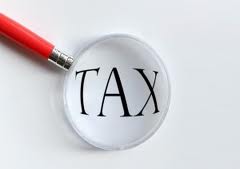The Best Vehicle Expense Method
Choosing the Best Vehicle Expense Method: Businesses generally have the option of choosing between one of two methods for documenting vehicle expenses and reporting them on their tax return. With the actual expense method, the business documents and reports all of a vehicle’s operating expenses including gas, oil, scheduled maintenance and repair. In contrast, the standard mileage method involves deducting a set mileage amount for each mile a vehicle is driven. Although there are some restrictions on the use of the standard mileage method, most businesses have the option of selecting whichever vehicle expense method provides the greatest tax advantage.
As stated in the previous paragraph, the actual expense method entails documenting and claiming all of the actual costs that are incurred in operating a motor vehicle during any given tax year. Such expenses include gas, oil and other operational costs in addition to all repair and maintenance expenses. They also include lease payments, interest on automobile loans, insurance costs and depreciation, among other things. When choosing this method, it is important to realize that all of the aforementioned costs must be documented in the event that the return is selected for an audit. In preparation for using the actual expense method, a business should retain the receipts for all vehicle expenses as well as keeping a log of when and why these expenses were incurred.
In contrast to the actual expense method, the standard mileage method allows the deduction of a set amount for each mile that vehicle is driven for business purposes during a given tax year. This mileage amount is 57.5 cents per mile for 2015. A business using this method can also deduct parking fees and tolls but all other operational and maintenance expenses are included in the mileage deduction. In addition, self-employed individuals can deduct that portion of interest on a vehicle loan that reflects the percentage of time the given vehicle is used for business purposes. As with the actual expense method, the standard mileage method requires documentation including date, mileage and business purpose for all miles used.
Although choosing the vehicle expense method that offers the greatest tax advantage might otherwise be a difficult task, most tax preparation software will make this determination once all of the data has been entered. This being the case, it is important to record all vehicle expenses from the beginning of the tax year so that the software can make an accurate decision at tax time. Outside of this, it should be noted that the standard mileage method is disallowed for businesses that claimed a Section 179 deduction, claimed a depreciation deduction using anything other than the straight-line method or use more than five cars at the same time. Another factor to be considered is that the actual expense method usually offers a greater tax advantage than the standard mileage method when there is an expensive vehicle with high fixed costs.
If your business is seeking business tax or business accounting solutions, our experienced professionals can provide you with the expertise you are looking for. Visit us today at www.businesstaxpreparation.com to learn more about our full range of business tax and business accounting services. Contact us by phone at (866) 676-9417 or by email at info@businesstaxpreparation.com to receive a free, no obligation consultation.

